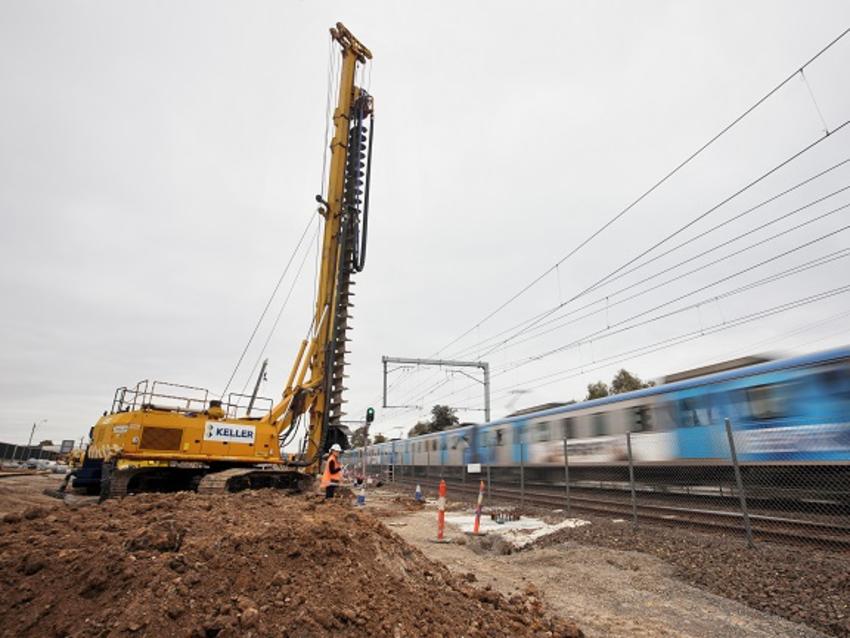More than 50 dangerous or congested level crossings throughout Melbourne, Australia are being removed and replaced by 2024. It’s a massive infrastructure investment by the Victoria State Government that will improve public safety, speed up travel times and boost the local economy. It’s also fantastic news for Keller Australia, which has been chosen to deliver several of the projects.

The Level Crossing Removal Authority has to date overseen the removal and redevelopment of 11 crossings, including two each in the suburbs of Bayswater and St Albans – both of which have involved Keller expertise.
For Bayswater, Keller was involved during the tender process, providing design and constructability advice to the delivery alliance of Laing O’Rourke and Fulton Hogan. “The overall project involved removing the level crossings and creating a grade separation for a rail under road solution,” explains Regional Manager Diarmaid Long. “So that the client could dig a corridor over a 1km decline, they required our expertise to construct the retaining walls, which were designed to protect the property and critical rail assets immediately adjacent to the excavation.
“Before the contract award, we worked closely with the client to develop a solution over several months to help them understand what would work and what wouldn’t. Once we’d won the contract, we then installed around 900 bored retention piles (900mm and 1,050mm diameter) up to 24m deep over about eight months. This solution was the most efficient to meet the pretty tight programme constraints.”
Tough ground conditions
St Albans, in western Melbourne was a similar project, won through a competitive tender put out by CPB Contractors. Keller was contracted to install retention piles for two rail underpasses and foundation piles for pedestrian bridges, a gantry and signal structures. The team installed around 500 bored piles at 600mm and 700mm diameter. While the geological conditions in Bayswater with its stiff clays were relatively straightforward, the high-strength basalt at St Albans required an expert team and specialist Bauer BG30 and Mait HR drilling rigs. These provided the necessary power and manoeuvrability on what was a tight site.
“The main challenge for both projects was that we were working in built-up areas within live rail corridors and close to the public,” says Diarmaid. “This type of work always presents numerous safety, logistic and programming challenges. Many areas could only be accessed during weekend or short-term rail occupations, where 24/7 works and up to five rigs and 10 crews were required to ensure the client could fully utilise the trains being taken offline
“Safety is always paramount, so we had very rigorous traffic control and safety procedures in place. The high volume of rail projects in Victoria is unprecedented, so there’s a lot of demand on resources. But one of the strengths of Keller is that we’re able to draw on the skilled people – along with the right machinery and expertise – from across Australia - to meet demand.”
More to come
Despite the challenges, both projects were completed successfully and ahead of schedule with no significant safety incidents. They’ve also led to contracts on three more level crossing projects in recent months, including those at Skye Road in Frankston (continuous flight auger piles), Mernda Rail Extension (bored retention and foundation piles) and for the North East Program Alliance (bored secant retaining wall).
And Diarmaid hopes there are more to come. “There are a lot of these level crossing projects in the pipeline, which is great for the construction industry around here. We’re confident that our expertise and reputation on these successful projects will lead to us winning even more in the near future.”